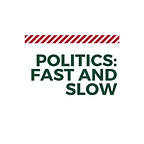Reduce First, Offset Later: How ‘Net Zero' Should Work
‘Net zero’ is a useful organising principle for climate action. But some companies are using it to kick the can and avoid decarbonising.
‘Net zero’ has become one of the most important terms in debates about climate change. Though it has been used in niche climate discourse for many years, it is since the Paris climate conference in 2015 that it has been elevated to celebrity status.
There it was used to organise emissions targets for countries, providing clear direction to the world’s efforts to coordinate action on climate change. And it was useful to these efforts because of the simple yet effective goal that it expresses:
Greenhouse Gases Emitted - Greenhouse Gases Sequestered = 0‘Net zero’ is a good aim. It requires radical action without seeming impossible, it makes intuitive sense to the public, and hitting net zero, globally, would signify huge progress.
But while there is brilliance in its simplicity, it’s also a dangerous simplicity. That’s because there are two things any person, organisation, or government can do to make progress towards net zero emissions: reduce actual emissions, or sequester emissions.
